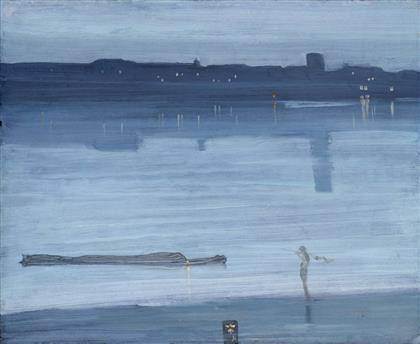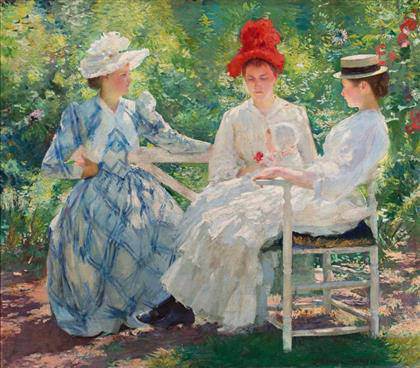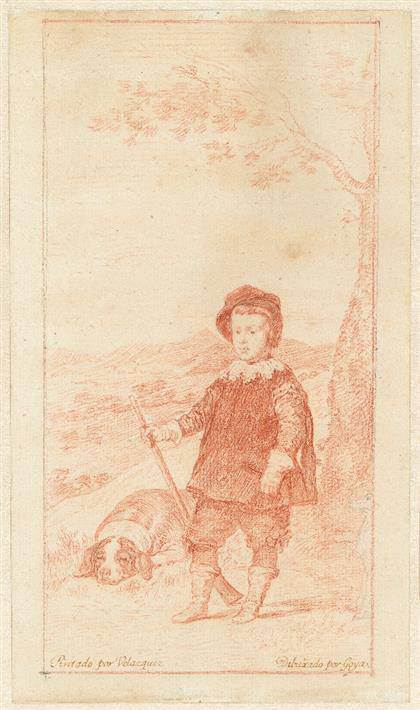
James Abbott McNeill Whistler
Nocturne: Blue and Silver – Chelsea, 1871
Tate Modern, London

Edmund Charles Tarbell
Three Sisters – A Study in June Sunlight in 1890, 1890
Milwaukee Art Museum
American Impressionism at Museo Thyssen-Bornemisza The Museo Thyssen-Bornemisza presents the first exhibition in Spain on the dissemination of Impressionism in the United States. 4 November 2014 to 1 February 2015.]]>
Source: Museo Thyssen-Bornemisza
Curated by Katherine Bourguignon, curator at the Terra Foundation for American Art and an expert in late 19th- and early 20th-century French and American art, the exhibition, which has already been seen at the musée des impressionnismes Giverny and the National Galleries of Scotland in Edinburgh, will include nearly 80 paintings that allow for an analysis of the way in which North American artists discovered Impressionism in the 1880s and 1890s and its subsequent development around 1900
While artists such as Mary Cassatt and John Singer Sargent had spent some years living and exhibiting their work in France and enjoyed close relations with painters such as Degas and Monet, it was not until 1886 with the exhibition of French Impressionism in New York organised by the art dealer Paul Durand-Ruel, that American painters began to make use of the new brushstroke, brilliant colours and themes of modern life characteristic of the French movement, in some cases even visiting Paris to discover it at first hand. The works by Cassatt, Sargent and Whistler on display in the exhibition reveal their role in the development of Impressionism in Europe, while those of Theodore Robinson and Childe Hassam, among other artists who also travelled to France to discover Impressionism, reveal a more gradual assimilation of the new technique. This was also the case with the American painters who, without any direct contact with the Impressionists and from a wide range of different viewpoints, were capable of adapting its ideas and style to national themes and thus captivate a new public. All these works are shown in the galleries of the exhibition alongside canvases by Monet, Manet, Degas and Morisot, which set them in context and establish an interesting dialogue.
For the American painters who wished to be part of this new,European modernity it was essential to spend time in Paris inorder to visit the Louvre and the annual Salon and in some casesto take classes at one of the growing number of studios andacademies. James McNeill Whistler was one of the first,followed by Mary Cassatt. In 1874, at the time when Paris wasrecovering from the Franco-Prussian War, a second wave ofAmerican painters arrived, among them John Singer Sargent andTheodore Robinson.
Highlights of the exhibition include James Abbott McNeill Whistler’s famous ‘Nocturne: Blue and Silver – Chelsea’, Mary Cassatt’s ‘Summertime’, John Singer Sargent’s ‘Two women asleep in a punt under the willows’, and Edmund Charles Tarbell’s ‘Three Sisters – A Study in June Sunlight in 1890’.
Related content
American Impressionism at National Galleries Scotland (exhibition, 2014)
Follow us on:


